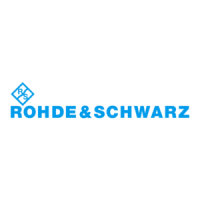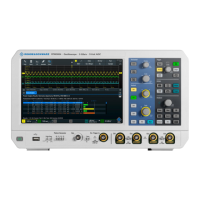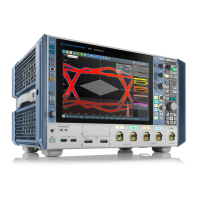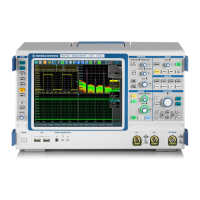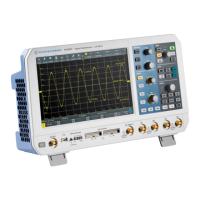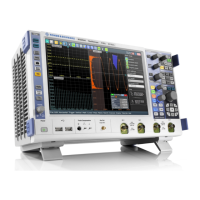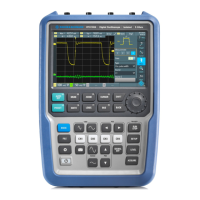Remote Control
R&S
®
RTM20xx
257User Manual 1317.4726.02 ─ 01
Example:
FORMat:READings:DATA #45168xxxxxxxx
The ASCII character # introduces the data block. The next number indicates how many
of the following digits describe the length of the data block. In the example the 4 following
digits indicate the length to be 5168 bytes. The data bytes follow. During the transmission
of these data bytes all end or other control signs are ignored until all bytes are transmitted.
#0 specifies a data block of indefinite length. The use of the indefinite format requires a
NL^END message to terminate the data block. This format is useful when the length of
the transmission is not known or if speed or other considerations prevent segmentation
of the data into blocks of definite length.
Overview of Syntax Elements
The following table provides an overview of the syntax elements:
: The colon separates the mnemonics of a command. In a command line the separating semicolon
marks the uppermost command level.
; The semicolon separates two commands of a command line. It does not alter the path.
, The comma separates several parameters of a command.
? The question mark forms a query.
* The asterisk marks a common command.
" Quotation marks introduce a string and terminate it.
# The hash symbol introduces binary, octal, hexadecimal and block data.
●
Binary: #B10110
●
Octal: #O7612
●
Hexa: #HF3A7
●
Block: #21312
A "white space" (ASCII-Code 0 to 9, 11 to 32 decimal, e.g. blank) separates the header from the
parameters.
Structure of a command line
A command line may consist of one or several commands. It is terminated by one of the
following:
●
a <New Line>
●
a <New Line> with EOI
●
an EOI together with the last data byte
Several commands in a command line must be separated by a semicolon ";". If the next
command belongs to a different command system, the semicolon is followed by a colon.
Example:
MMEM:COPY "Test1","MeasurementXY";:HCOP:ITEM ALL
This command line contains two commands. The first command belongs to the MMEM
system, the second command belongs to the HCOP system.
Basics
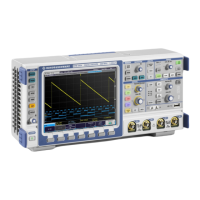
